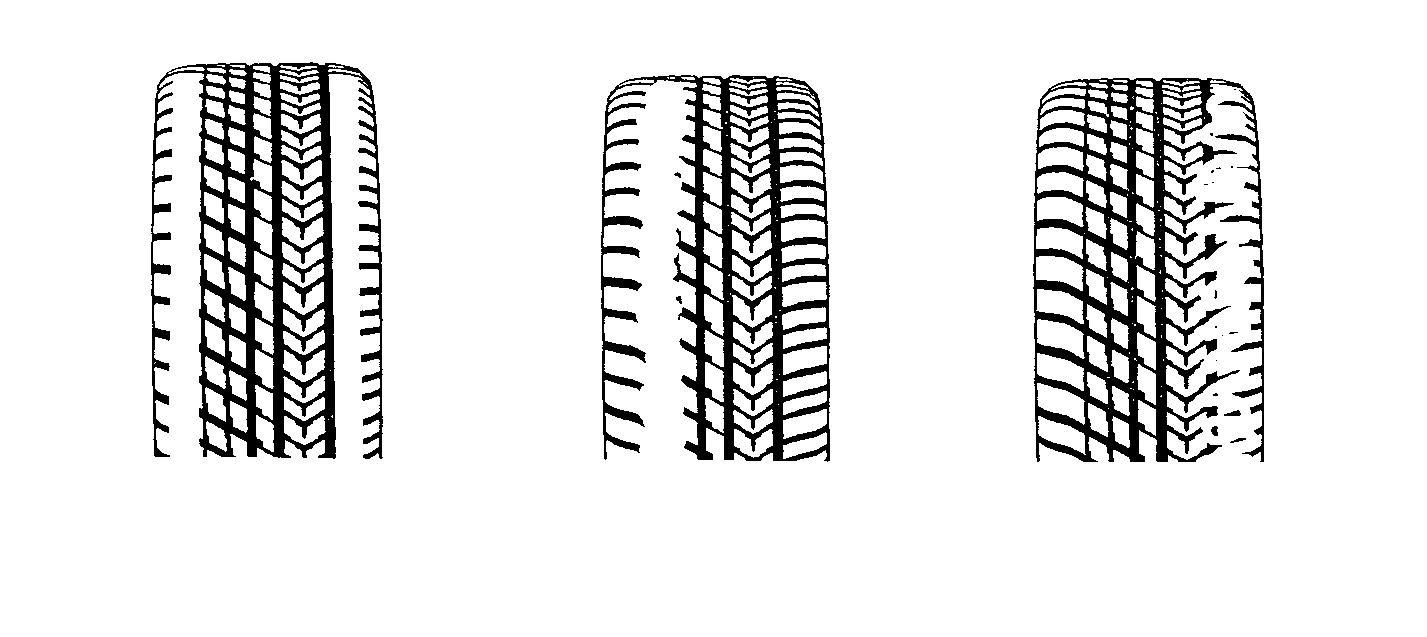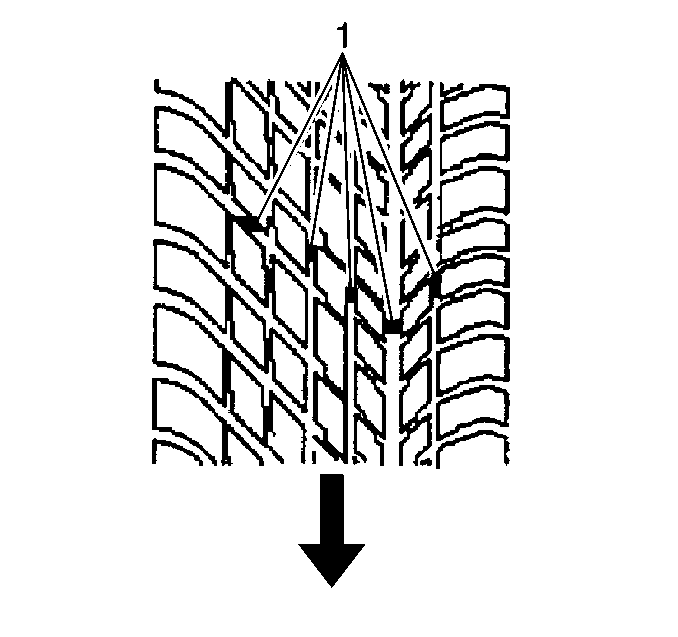
The following are some causes for irregular and premature wear:
| • | An incorrect tire inflation pressure. |
| • | A lack of tire rotation. |
| • | Harsh driving habits. |
| • | An incorrect wheel alignment. |
| • | A faulty tire (radial belts). |
| • | A damaged shock. |
| • | A worn shock. |
| • | An unbalanced tire. |
| • | A damaged wheel. |
| • | A damaged rotor. |
| • | A damaged axle shaft. |
| • | A worn rotor. |
| • | A worn axle shaft. |
Inspection Procedure
Rotate the tire and wheel if the following conditions are noted:
| • | The front tire wear is different from the rear tire wear. |
| • | An uneven wear exists across the tread of any tire. |
| • | The left front and the right front tire wear is unequal. |
| • | The left rear and the right rear tire wear is unequal. |
Check the wheel alignment if the following conditions are noted:
| • | The left and the right front tire wear is irregular. |
| • | The wear is uneven across the tread of any front tire. |
| • | The front tire treads have a scuffed appearance with feathered edges on one side of the tread ribs or the blocks. |
Tread Wear Indicators

Built-in tread wear indicators are equipped on the original tires. The built-in tread wear indicators show when tires need replacement. The indicators appear in 6 places (every 60) around the tire when the tread is worn to 2/32 inch. Tire replacement is recommended when the indicators appear in 3 or more locations (1).
Step | Action | Yes | No | |
|---|---|---|---|---|
1 | Road test the vehicle to verify complaint. Is vibration present? | -- | ||
2 | Visually inspect the wheels and the tires for debris or road damage Are the wheels free of debris and road damage? | |||
3 |
Is repair complete? | System OK | -- | |
4 | Is vibration present above 64 km/h (40 mph)? | |||
5 | Perform off vehicle dynamic balance. Is vibration still present? | System OK | ||
6 | Is vibration present below 64 km/h (40 mph)? | |||
7 | Perform on vehicle runout check. Is runout excessive? | |||
8 |
Is the vibration still present? | System OK | ||
9 | Index assembly on wheel studs. Is vibration still present? | -- | ||
10 | Perform on vehicle finish balance. Is vibration still present? | System OK | ||
11 | Measure axle or hub flange runout. Is runout excessive? | System OK | ||
12 | Replace the axle shaft or replace the hub as necessary. Is the repair complete? | System OK | -- | |
